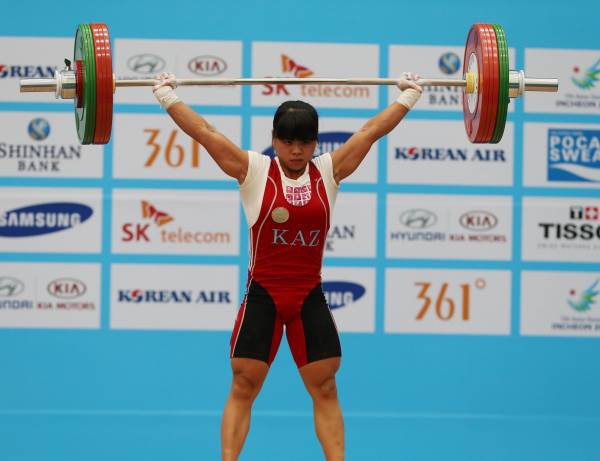For good or for ill, functional training is a trend in sports training. Although the term was originally used to distinguish functional training methods from bodybuilding styles, some of its applications resemble a strange blend of Ninja Warrior and Barnum and Bailey’s circus.
Thankfully, a return to reality has started to take place, as coaches bring the focus back to the basics: multi-joint basic lifts. I hope I have seen my last one-leg BOSU alternate-arm kettlebell snatch ever.
The Montessori Way
“Education is a natural process carried out by the human individual, and is acquired not by listening to words, but by experiences in the environment.” – Maria Montessori
A decade’s worth of pain, frustration, and lack of progress would have been saved if the coaching world had looked toward the Montessori system for inspiration.Maria Montessori was a strong believer in having students get in touch with reality and nature. Montessori classrooms usually have a distinct lack of plastic and other artificial materials in comparison to traditional classes. One of the keystones of the Montessori system is frequent practice with the real thing, as much and as safely possible.
Working with athletes is similar. Artificial simulation does not create real abilities. Skill only comes after hours of hard work. You must spend time working on the specific skills you wish to improve.
Often this isn’t fun, but for coaches, this focus on hard work actually makes the job easier. If you coach sports, leave the off-season strength training in the hands of your strength and conditioning coach, if your school has one. If it doesn’t, then at least divide your schedule. Let skill time be skill time and strength time be strength time. Blending the two into an inefficient mish-mash produces nothing but sweat.
A simple program that includes the classic powerlifts and one variation of the snatch or clean would do better for most athletes than half a million varied “functional training” lifts like the ones I described above. Athletes who compete in strength sports (powerlifters, Olympic lifters, strongmen, and CrossFitters) may need more than that, since skill training and strength training are one and the same for them.

An Old-Fashioned Functional Workout
Simplifying your training doesn’t have to be boring, but it will be different. How do the two approaches look in the weight room? Let’s use a football defensive lineman as an example. We will call one a “functional” workout and the other a “Montessori” workout.
- 10 minutes of various jogs and runs, to include front, back, side shuffles, crossovers, skips and jumps.
- Foam rolling
- Split stance kettlebell snatches, 4 x 5
- One arm BOSU Landmine Presses. 10 x 4 (Starting from a half squat to simulate firing off the ball and gaining separation on an opponent.)
- 4 directional dumbbell lunges, 5 x 8 (2 each direction)
- Box jumps, 4x max height
- Ladder walk push ups combined with dumbbell rows, 3 x whatever your ladder is (If you can do it while wearing a weight vest, even cooler.)
- TRX planks 3x to exhaustion
This workout requires eight different movements, 26 different sets, and at least seven different pieces of functional equipment, in addition to normal weight room bars and racks. Total time to completion? Probably around 1.5-2 hours, when changeover and rest periods are figured in.
Montessori-Inspired Workout
Now, let’s look at a football-focused Montessori workout. This workout would be followed (or preceded) by a skill-specific practice done at a different time.
- 800 meters (½ mile) jogging – Just enough to get a bit of a sweat worked up.
- Back squats, 2 warm up sets, then 4 x 6 – Rate of exertion should be high. “One left in the tank,” so to speak.
- Romanian deadlift, 1 x 12 – Stress should be on squeezing the hips and glutes through the motion. Pull the shoulders back at the top as well.
- Incline press, 5 x 5 – Use a spotter. That last set should be a grunter. Don’t do this in a Planet Fitness.
- Pullups/dips superset, 4 x as many reps as possible (AMRAP) – Ensure stoppage at form failure, not paralytic muscular failure.
- Hanging leg raises, 3 x AMRAP
That’s a total of six exercises (seven if you count the superset as two movements), but only seventeen work sets. Most likely completion in the range of 45 minutes to one hour. Best of all, you only need a single power rack, a bar, and plates. At the right intensity, I challenge anyone to do it and call it easy.
The Benefit of Using the Montessori Approach to Fitness
What can a sports coach do with that extra hour? Ask any coach what they would give to have an extra hour three or four times a week with their athlete, and most would be rubbing their hands with glee. Walkthroughs. Tape review. Drilling. For those who have student athletes, a chance to get their homework done. Putting some sort of rest in between the two workouts also ensures that the total average intensity of the split workouts is going to be higher than the two-hour functional marathon.
When designing your own workouts, take a moment to look past the hype and the funky-looking devices endorsed by trendy fitness celebrities. Instead, consider using the Montessori ideal of realism. A lot of athletes would be a lot stronger and fitter if we applied this concept. On the other hand, the BOSU company would probably be out of business.
Photos courtesy of Shutterstock.






